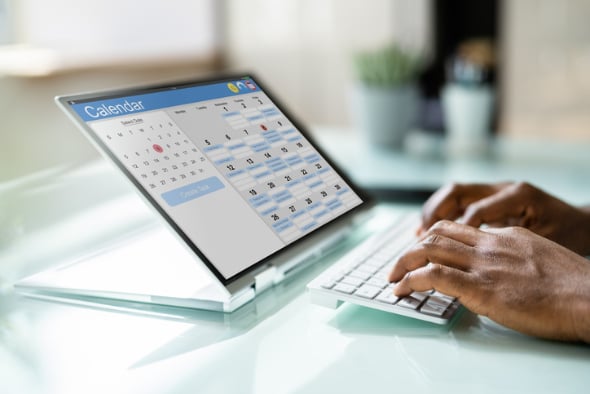What is a Trivago hotel booking?
Owned by Expedia Group, one of the world’s largest online travel corporations, Trivago is a metasearch engine that collates and displays hotel options from across a range of online booking sites. It’s a comparison site – an easy way for a guest to check accommodation options in a given area, and find the cheapest or best way to book each.
A Trivago hotel booking isn’t actually a Trivago booking. The site doesn’t take reservations itself, but rather redirects its users to hotel booking sites to secure their room. Trivago then takes a small commission for facilitating the sale.
This was even true for Trivago Express Booking and Trivago Direct Connect, tools which made it look like a customer was booking with Trivago, but actually used an API to connect directly to an OTA or a hotel’s direct booking website without leaving Trivago.
Less admin tasks, more direct bookings
Getting hotel bookings from OTAs like Trivago can be quite time-consuming, but with the help of Little Hotelier, you can gain more direct bookings with less effort.
Learn moreWhy should hotels accept Trivago hotel reservations?
While it might not be a hotel booking site, Trivago still has a huge amount of power over the bookings of potential guests. As of mid-2023, Trivago consistently attracted around 10 million visitors per month and informed the hotel booking choices of many. If you choose to ignore Trivago, you also choose to ignore those 10 million potential guests.
But the reasons to accept Trivago hotel reservations extend far beyond FOMO:
- Trivago offers your hotel the opportunity to make an impression on a potential guest at the exact moment they are looking to book.
- The platform also allows small, independent hotels to compete with big OTAs like Expedia and Booking.com, and sidestep their commissions, by publishing direct booking rates on the site.
- With its ability to facilitate direct online hotel bookings, Trivago also allows independent hotels to extract and own valuable guest data, rather than relying on the minimal information that tends to be offered up by OTAs.
How does an online hotel booking on Trivago work?
What does the process of booking a hotel room through Trivago look like for the traveller? Let’s take a look.
1. Enter basic travel plans
Having navigated to Trivago.com, a user will be asked to supply the following information:
- Destination: This could be a city, a region, a specific hotel, or even a landmark.
- Dates: The check in and check out dates.
- Room details: How many rooms are needed, how many people are staying (adults and kids), and whether pet-friendly accommodation is required.
Once those details are filled in a user can click ‘Search’ to begin discovering their hotel options.
2. Filter and sort the results
Having been served up a range of hotel options from a range of booking channels, a Trivago user is then invited to filter the options by price, property type, guest rating and more.
The results can also be sorted in any number of ways. The default is ‘Our recommendations’, but a user can also choose to rank by price, rating, or a mix of these options.
3. Choose a deal
Having found a tempting hotel, a user can browse all the booking options for it, listed from cheapest to most expensive. It’s at this point that the user will be directed to click a button labelled either ‘View deal’ or ‘Visit site’, which takes them from Trivago to the chosen booking site to complete their reservation.
How to set up and manage Trivago hotel bookings
How can an independent hotel make the most of Trivago? Here’s how to capitalise on the platform in five simple steps.
1. Register and complete your details
Your first task is to register with Trivago, as this allows you to offer direct bookings on the site, rather than relying on OTAs to sell your rooms for you. Head to Trivago Business Studio, click ‘Register for free’, then complete your details to create a direct booking listing.
2. Update your rates
Given Trivago sells itself as a price comparison site, rates are king. With the major OTAs charging hotels a 15%-25% commission on each booking, you may have quite a bit of wriggle room to lower your prices, though you will need to comply with any Hotel Rate Parity agreements you have.
3. Respond to reviews
Guest reviews are as important on metasearch sites as they are on hotel booking sites. Trivago pulls reviews from OTAs, but it also has its own review feature, so it’s important that you respond to these reviews, particularly any that may be negative.
4. Include high quality images
By creating your own profile on Trivago, you have the opportunity to put your hotel in the best possible light. Get professional photos taken, then upload the high quality images to your Trivago listing.
5. Use a hotel property management system
If you successfully attract direct Trivago reservations, you’ll need to have tools and systems in place to manage those bookings efficiently and effectively. Designed for small, independent accommodation providers, the Little Hotelier property management system (PMS) does just that.
By Dean Elphick
Dean is the Senior Content Marketing Specialist of Little Hotelier, the all-in-one software solution purpose-built to make the lives of small accommodation providers easier. Dean has made writing and creating content his passion for the entirety of his professional life, which includes more than six years at Little Hotelier. Through content, Dean aims to provide education, inspiration, assistance, and, ultimately, value for small accommodation businesses looking to improve the way they run their operations (and live their life).
Table of contents
“We’ve seen a 10-15% revenue increase with Little Hotelier. We had great support and met expectations during training. It’s very easy to manage via mobile app.”
Manager, Kränzel 21








